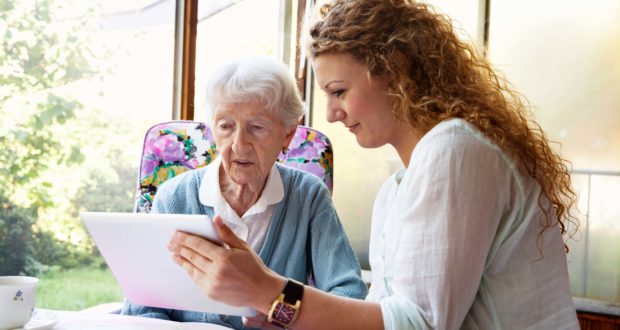Certain considerations must always be contemplated and envisaged before implementing changes to an environment where an elderly person resides, to ensure they are as comfortable, safe and happy as possible.
One area of growing concern is hydration and nutrition, which once again, recently saw a spotlight cast over the fundamental need for older people in aged care facilities to get the appropriate dietary requirements to live a healthy and happy life following National Nutrition Week back in October.
Indeed, initiatives such as this are crucial in paving the way towards a greater understanding of the dangers, risk factors and signs of malnutrition and dehydration in aged care, but they should be at the forefront of care practices year-round.
According to Independence Australia, up to 10 to 44 per cent of older Australians are at risk of malnutrition, while a third of Australians admitted to hospital aged over 65 are malnourished. Of those living in aged care, between 20 to 65 per cent are malnourished and almost 75 per cent are at risk.
Health Direct Australia defines malnutrition as a health condition that develops when someone does not have enough nutrients to meet their body’s needs. It can happen over time if someone does not have enough food, if they do not eat the right types of food, or if their body cannot absorb enough nutrients from food.
Unfortunately, malnutrition amongst those residing in aged care facilities is, all too often, a hidden problem of which the consequences can be severe. In the worst cases, older people can become extremely ill and be admitted to hospital.
Thankfully, in recent years, we as a sector have an increased awareness of the symptoms of malnutrition and dehydration and strive to empower caregivers to detect them through digital care technology.
With digital care plans in the palm of their hands, carers and nurses can immediately see whether residents have had sufficient nutrients or fluids and take appropriate action. The fluid offered to residents, and the amount of fluid drunk in cups, for instance, is quickly evidenced at the point of delivery. Reminders to offer drinks or specific food groups can also be set up as part of a planned person-centred routine, with a traffic system of flags alerting
staff to when a care task is due, or to a resident falling below the recommended nutrition/hydration threshold for the rolling 24-hour period.
Digital care plans can also measure the malnutrition risk of an individual by monitoring any unplanned weight loss, which automatically updates their body mass index on the system.
So, when the risk increases, caregivers can be alerted and take appropriate action to avoid that person becoming malnourished or dehydrated. Any action taken, whether that be foods or fluids, is then pulled through to the system so everyone can instantaneously see the individual’s real-time nutrition and fluid charts.
Monitoring a person’s oral health is another important factor to consider when avoiding malnutrition. For example, if a person is suffering from an injury to the mouth, then they will be less likely to eat and drink their daily intake as it could be an uncomfortable and unpleasant experience for them. However, through the utilisation of technology, caregivers have the tools at their disposal to monitor and share sore or swallowing issues that contribute to how well someone can eat and drink. For example, someone with dysphagia may need to be put on a textured diet to ensure they get their required nutrients.
With all these risks to malnutrition, a score can then be given, which categorises an individual into low, medium, or high risk. This allows everyone with access to their care plans to instantly see who requires attention.
Again, it is all about being able to review someone’s needs by measuring all risk factors such as height, weight, age, allergies, medical conditions, etc. All data is pulled through the digital care management system, allowing caregivers to provide the appropriate level of person-centred care.
It is clear to see the benefits of technology – and care providers are quickly learning how its flexibility can drive improvements in ensuring that they understand the fundamental need for older people in Australia’s aged care system to get the appropriate nutrients and hydration required to live a healthy and happy life.
Overall, digital care technology allows aged care providers to get a full picture of an individual’s nutrition and hydration plan, which can be monitored and updated in real-time – something that simply isn’t possible with paper-based or outdated digital systems.
Going forward, digital care plans will be the benchmark for providing a holistic approach to care that ensures people working in aged care facilities have a significantly lower chance of dealing with malnutrition and dehydration.
Tammy Sherwood is the CEO of Person Centred Software Australia.
Do you have an idea for a story?Email [email protected]
 Aged Care Insite Australia's number one aged care news source
Aged Care Insite Australia's number one aged care news source

